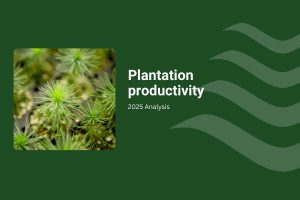As the forestry sector gathers for the 2025 Forestry Australia Conference in Adelaide next week, innovation will take centre stage. The FWPA Forest Growers Research Program is proud to showcase a range of projects demonstrating how research and technology are shaping more sustainable, resilient, and productive plantations across Australia.
On Day 2 of the conference, researchers supported through FWPA’s Grower Research Advisory Committee (GRAC) will present breakthroughs in areas such as reforestation, biosecurity, and biodiversity monitoring.
Their work reflects FWPA’s core mission: to deliver practical research outcomes that enhance productivity, improve environmental performance, and strengthen the competitiveness of Australia’s forest industries.

Register here: 2025 Forestry Australia Conference – Adelaide | 20 – 23 Oct 2025
Harnessing technology for smarter, faster decisions
Across the country, new technologies are transforming the way growers manage plantations.
In Tasmania, James Montgomery from the University of Tasmania is using IoT acoustic sensors to monitor wildlife in remote forest environments. This technology allows real-time detection of threatened species, helping managers plan operations that protect biodiversity while maintaining productivity.
Meanwhile, Anthony Finn from the University of South Australia is developing PINT – a Program for performing survival counts. By automating the analysis of plantation data, this tool will allow faster and more accurate survival assessments, giving growers insights that once took weeks to compile.
Further north, Nina Hinko-Najera from the University of Melbourne is exploring water use across topographically complex catchments, providing vital data for smarter irrigation and plantation planning in a changing climate.
Building resilience from the ground up
Healthy forests start with healthy seedlings. Research led by Jonathan Plett from Western Sydney University’s Hawkesbury Institute for the Environment is identifying innovative nursery management solutions to combat root disease and boost resilience. The goal is simple but significant: produce stronger seedlings, reduce loss, and enhance productivity across the plantation life cycle.
At the same time, Bala Thumma from Diversity Arrays Technology is advancing Eucalyptus breeding for disease resistance, using genetic tools to help growers manage Teratosphaeria Leaf Disease. These developments are crucial for securing the long-term health and yield of Australia’s plantations.
Securing productivity and protecting trade
Australia’s forestry exports depend on maintaining the highest standards of biosecurity. Conrad Trollip from the NSW Department of Primary Industries and Regional Development is developing rapid diagnostic protocols for forest biosecurity surveillance, designed to detect threats before they spread.
Similarly, Dylan McFarlane from VSICA Research is assessing how to safeguard Australia’s log export markets in the face of future restrictions on methyl bromide. His work explores alternative treatments that maintain both biosecurity integrity and trade access.
To complement this, Auro Almeida from CSIRO is assessing productivity and growth constraints in Eucalypt and Pine plantations in Tasmania, providing the data required to plan for sustainable forestry under variable climate and soil conditions.
Quantifying risk, valuing sustainability
Fire risk mitigation is another key research focus. Martin Strandgard from the University of the Sunshine Coast is conducting a cost–benefit analysis of treating pine thinning residues, providing practical insights into how management actions can reduce bushfire risk while maintaining economic viability.
Meanwhile, Jim O’Hehir from the University of South Australia is integrating APSIM into resource management systems, allowing forest managers to account for climate change in wood flow modelling and estate valuation. This integration of climate science with operational decision-making will help secure both environmental and financial sustainability.
Collaboration at the heart of progress
Each of these projects highlights the strength of collaboration between researchers, growers, and industry. By aligning scientific research with practical on-ground challenges, FWPA’s Forest Growers Research Program continues to deliver innovations that drive measurable results.
At the 2025 Forestry Australia Conference, these presentations will offer a glimpse into the future of plantation management – one where digital technology, genetics, and climate science work together to create more productive, resilient, and sustainable forests.
Join us in Adelaide from 20–23 October to hear directly from the researchers shaping that future and to explore how innovation is helping secure Australia’s forest landscapes for generations to come.
The team at FWPA are looking forward to connecting with new and familiar faces and at the feedback from the sessions.



